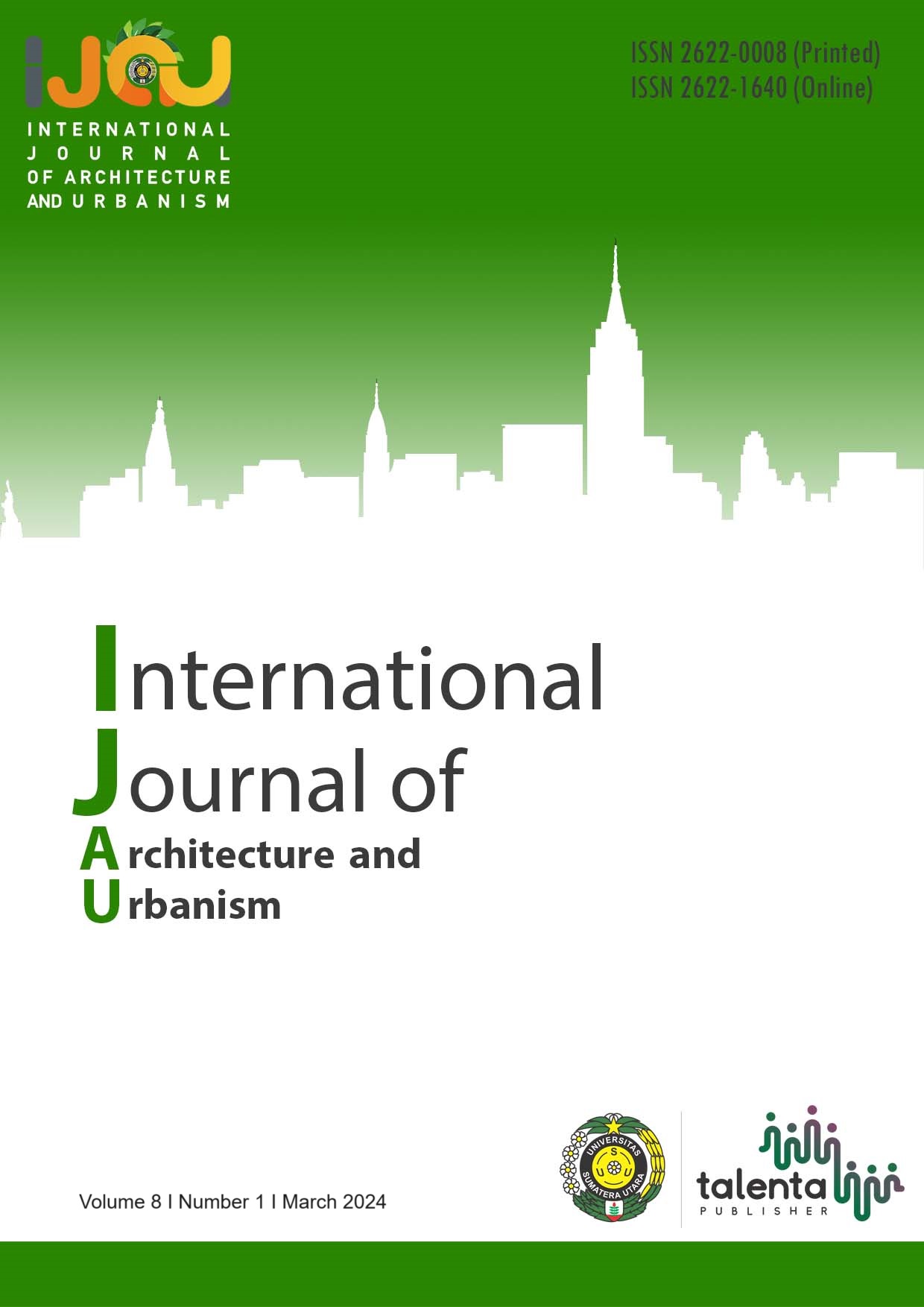The Identification of Ethnic Architecture Application on the Beringharjo Market Building in Yogyakarta
DOI:
https://doi.org/10.32734/ijau.v8i1.14322Keywords:
architecture ornaments, ethnic, javanese culture, philosophical axis, traditional marketAbstract
Indonesia is an archipelago country that consists of various ethnic groups which have different cultural traditions according to the region itself. This cultural tradition has existed for generations, and it should be maintained and preserved by the Indonesian. The development of times, it makes the local value ​​of traditional culture slowly disappear. In prevention, the application of this ethnic architecture concept can preserve the culture of a nation. One of building that has the ethnic architecture concept is the Beringharjo Market in Yogyakarta. This research uses a qualitative descriptive method using a case study approach that aims to know how the application of the Ethnic Architecture concept in the Beringharjo Market. The construction of this market reflects the Javanese ethnic culture that prioritizes harmony. The space planning of Beringharjo Market contains Javanese philosophy and the mixture of ethnicities, one of them is European ethnicity. We can see the mixture through the shape of building, this market adopts European style and traditional Javanese style. The acculturation process of two cultures that is Javanese and European cultures shows us that the mixture culture is not limited to the locality but also across continents since the olden days. We can apply the glory of the palace to this market building that has a lower degree, especially to some elements of this building using some adjustments.
Downloads
Downloads
Published
How to Cite
Issue
Section
License
Copyright (c) 2024 International Journal of Architecture and Urbanism

This work is licensed under a Creative Commons Attribution-ShareAlike 4.0 International License.


.png)










